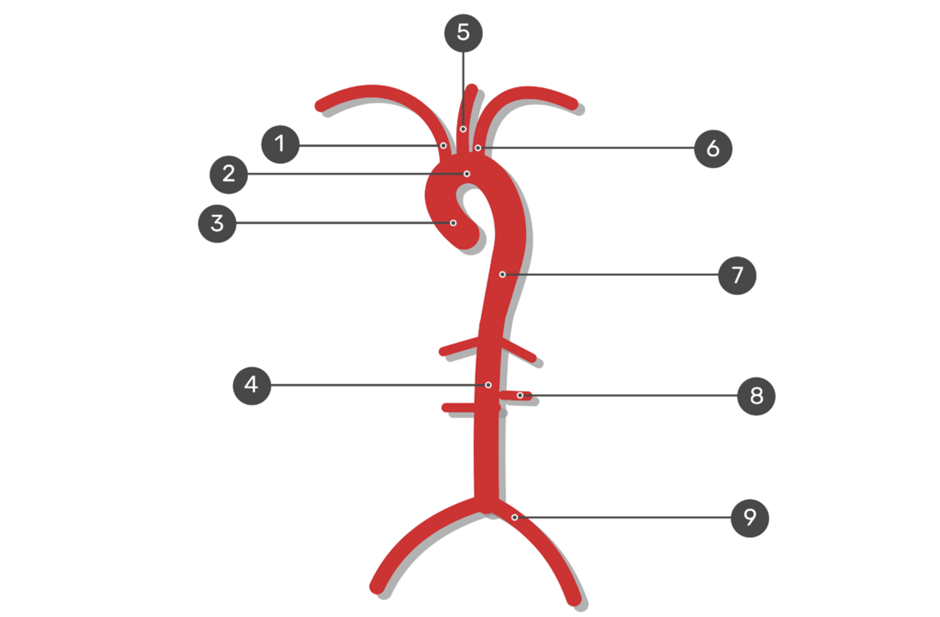Which structure is highlighted and indicated by the leader line 9?

Right common iliac artery
Right internal iliac artery
Left common iliac artery
Abdominal aorta
Right external iliac artery
Right femoral artery
The Correct Answer is C
A. Right common iliac artery:
Arises from the abdominal aorta; bifurcates into internal and external iliac arteries.
B. Right internal iliac artery:
Supplies pelvic organs; branches off the common iliac artery.
C. Left common iliac artery:
The left-side counterpart of the right common iliac.
D. Abdominal aorta:
Major artery running down the midline; bifurcates into the common iliac arteries around L4.
E. Right external iliac artery:
Continues into the femoral artery; runs along the pelvic brim.
F. Right femoral artery:
Located in the thigh, distal to the inguinal ligament; often seen in lower limb images.
Nursing Test Bank
Naxlex Comprehensive Predictor Exams
Related Questions
Correct Answer is D
Explanation
A. Metabolic acidosis: Caused by metabolic conditions like renal failure or lactic acidosis.
B. Metabolic alkalosis: Not caused by lung pathology.
C. Respiratory alkalosis: Occurs with hyperventilation, not in emphysema.
D. Respiratory acidosis: Emphysema impairs gas exchange and reduces CO₂ exhalation, leading to CO₂ retention and respiratory acidosis.
E. Digestive alkalosis: Not a recognized acid-base disturbance.
Correct Answer is {"dropdown-group-1":"A","dropdown-group-2":"A"}
Explanation
A. Insulin; glucagon and epinephrine: Insulin promotes glycogenesis (storage of glucose as glycogen), while glucagon and epinephrine stimulate glycogenolysis (breakdown of glycogen to glucose).
B. Insulin; aldosterone: Aldosterone regulates sodium and potassium; not directly involved in glucose metabolism.
C. Growth hormone; glucagon and epinephrine: GH has minimal effect on glycogenesis. The second part is correct, but the first is not.
D. Growth hormone; cortisol: Cortisol can promote gluconeogenesis, not specifically glycogenolysis. GH does not drive glycogenesis.
E. Growth hormone; insulin: Insulin does not stimulate glycogenolysis. This pairing is incorrect.
Whether you are a student looking to ace your exams or a practicing nurse seeking to enhance your expertise , our nursing education contents will empower you with the confidence and competence to make a difference in the lives of patients and become a respected leader in the healthcare field.
Visit Naxlex, invest in your future and unlock endless possibilities with our unparalleled nursing education contents today
Report Wrong Answer on the Current Question
Do you disagree with the answer? If yes, what is your expected answer? Explain.
Kindly be descriptive with the issue you are facing.
